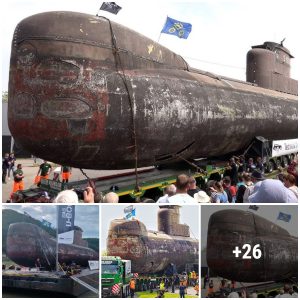One of just two largely forgotten post-Cold War experimental jet fighters is now in the collection of Munich’s Deutsches Museum. It is the Rockwell-Messerschmitt-Bölkow-Blohm X-31, which was initially designed to test fighter thrust vectoring technology.
Two X-31 Enhanced Fighter Maneuverability demonstrators were designed and built by Boeing heritage company Rockwell International and German manufacturer Messerschmitt-Bölkow-Blohm. They were subsequently test-flown during the early 1990s at NASA’s Dryden Flight Research Center in Edwards, CA to obtain data on control in the post-stall flight regime. The X-31 program was initiated to demonstrate the value of thrust vectoring – directing engine exhaust flow – coupled with advanced flight control systems, to provide controlled flight at very high angles of attack.
The single-seat X-31 was also notable in that it was used in two major multinational flight test programs. The two prototypes were created utilizing many off-the-shelf components, borrowed from designs including the F-16, F-16XL, F/A-18 Hornet and the B-1 bomber. That allowed for the development costs to be kept down, while it also resulted in a short construction time.
The X-31 program successfully highlighted the value of using thrust vectoring (directing engine exhaust flow) coupled with advanced flight control systems, to provide controlled flight to very high angles of attack. The result is a significant advantage over conventional fighters in a close-combat situation, aka dogfighting.
EFM
The Enhanced Fighter Maneuverability (EFM) program began in 1990, and was comprised of Boeing, Defense Advanced Research Projects Agency (DARPA), the U.S. Navy, and NASA; as well as Germany’s defense procurement agency (BWB) and the European Aeronautic Defence and Space Co. (EADS).
During the 581 test flights as part of the EFM program, the X-31 flew well beyond the aerodynamic limits of any conventional aircraft by demonstrating controlled flight at a 70 degree angle of attack (AOA), a controlled roll at around 70 degrees AOA, and a rapid minimum radius, 180-degree turn using a post-stall maneuver – the latter dubbed the “Herbst Maneuver” after Wolfgang Herbst, a German proponent of using post-stall flight in air-to-air combat.
Flying in the post-stall regime – where the aircraft is at angles of attack greater than the maximum – was achieved in the X-31 by combining the thrust vectoring with advanced digital flight controls.
Crash and Burn
Despite the early success of the program, on January 19, 1995, near the end of a 43-minute mission, ice had formed in one of the X-31’s pitot tubes, while incorrect data was sent to the flight control’s computers. As a result, the aircraft oscillated uncontrollably and pitched. The pilot was able to eject safely, while the X-31 aircraft crashed near the northern edge of Edwards Air Force Base, Edwards, Calif.
The remaining X-31 prototype aircraft went on to fly 21 demonstration flights, including at the 1995 Paris Air Show. Following the EFM program’s conclusion in June 1995, the X-31 was then transferred to the U.S. Navy Test Pilot School at the Patuxent River Naval Air Station in Maryland.
In January 2000, the Vectoring ESTOL (extremely short takeoff and landing) Control and Tailless Operational Research (VECTOR) program began. Partners were the Boeing research and development organization, Phantom Works, the U.S. Navy, BWB, and EADS. During that same year, the X-31 successfully demonstrated landing speeds of only 124 knots (142 mph, 229 kph) at 24 degrees AOA — compared to the normal landing speeds of 175 knots (201 mph, 324 kph) at 12 degrees AOA — and landed in about 1,700 feet (518. meters) rather than the more typical 8,000 feet (2,438 meters).
In its final flight on April 29, 2003, the X-31 performed the last in a series of fully automated ESTOL landings on an actual runway, approaching at a high 24-degree AOA (twice the normal 12-degree AOA) at only 121 knots (34 mph, 55 kph), more than 30 percent slower than the normal 175-knot (201-mph, 324-kph) landing speed. The program ended in May 2003, and later that year, Boeing and the X-31 team — past and present — received the von Karman award from the International Council of the Aeronautical Sciences.
The aircraft is now retired and is in the museum on display in Germany.





